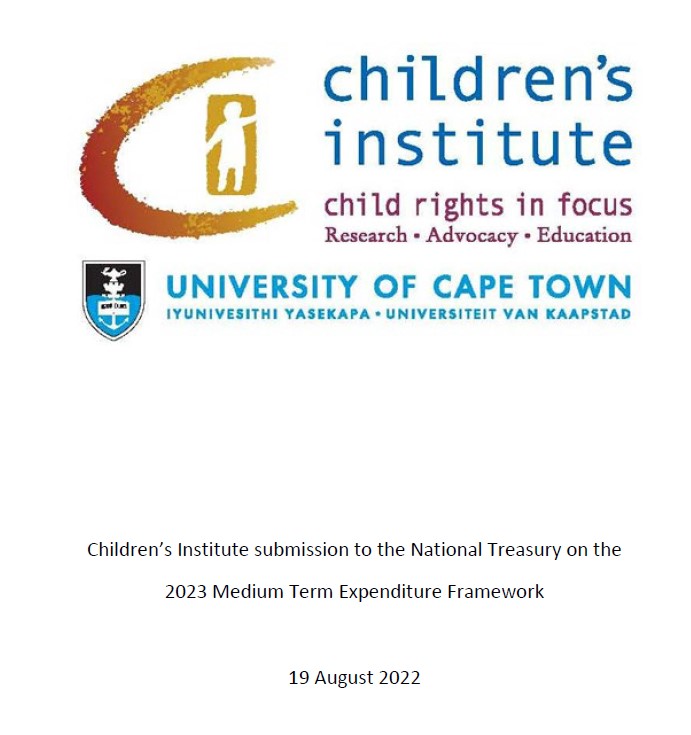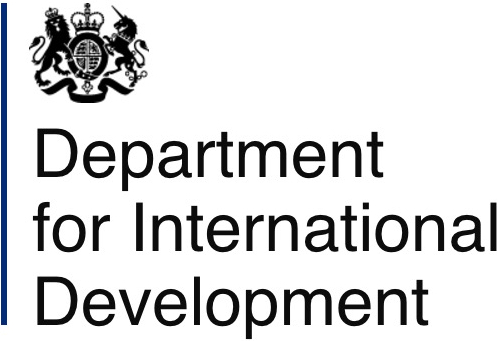Definition
This indicator shows the number and percentage of children who live in households that are connected to a mains electricity supply from their municipality or Eskom.Data
Source
Statistics South Africa (2003 - 2025) General Household Survey 2002 - 2024. Pretoria, Cape Town: Statistics South Africa.
Analysis by Katharine Hall & Sumaiyah Hendricks, Children’s Institute, University of Cape Town.
Analysis by Katharine Hall & Sumaiyah Hendricks, Children’s Institute, University of Cape Town.
Notes
- Children are defined as persons aged 0 – 17 years.
- Population numbers have been rounded off to the nearest thousand.
- Sample surveys are always subject to error, and the proportions simply reflect the mid-point of a possible range. The confidence intervals (CIs) indicate the reliability of the estimate at the 95% level. This means that, if independent samples were repeatedly taken from the same population, we would expect the proportion to lie between upper and lower bounds of the CI 95% of the time. The wider the CI, the more uncertain the proportion. Where CIs overlap for different sub-populations or time periods we cannot be sure that there is a real difference in the proportion, even if the mid-point proportions differ. CIs are represented in the bar graphs by vertical lines at the top of each bar.
What do the numbers tell us?
The International Committee on Economic, Social and Cultural Rights (CECSR) issued a general comment on the meaning of ‘adequate’ housing. It identified seven key elements which need to be assessed to measure whether housing is ‘adequate’. One of these elements is access to services including access to safe energy sources, such as an electricity connection in the house. Access to a safe energy source such as electricity has an impact not only on the child’s right to housing, but also on their rights to health, nutrition and education.
Where there is no electricity, families use other fuels for lighting, heating and cooking, and these can pose health and safety hazards. For example, candles and paraffin stoves are fire hazards when dwellings are built out of materials that burn easily; wood or dung fires can contribute to respiratory infections; burns from open fires are a common cause of injury and death. Where families do not have access to fridges, they are also less able to keep food fresh.
There are a number of time-use consequences to not having electricity. It is usually women and children who collect wood and other fuels, and more effort is required for cooking and heating with these fuels. Time spent by children to collect fuel can impact on their ability to do their homework and keep up at school. Also, a lack of adequate electric lighting makes it difficult for children to study after dark.
In 2022, many more children had electricity in their homes (92%) than had access to adequate sanitation (79%) or safe drinking water on site (72%). As with water and sanitation, access to electricity varies considerably across settlement and housing types. While 97% of formally-housed children live in households with electricity, this drops to 53% amongst children in informal dwellings. One of the main dangers of informal settlements for children is the risk of fires, which spread rapidly and are often started when households use alternative and more dangerous energy sources (such as paraffin) for cooking and lighting. Access to electricity does not necessarily mean that households discontinue using flammable fuels, but it does provide an alternative that is safer – if households can afford safer appliances and the cost of electricity.
There was rapid improvement in children’s access to electricity across the country over the 15-year period from 2002 (71%) to 2017 (90%). The improvement was driven mainly by the roll-out of electricity infrastructure in the rural former homelands areas of the Eastern Cape and KwaZulu-Natal. Over the same period, the gap in electricity service provision for rich and poor households narrowed and by 2022, 92% of children in the poorest quintile had a mains electricity connection at home (up from less than 60% in 2002). While electricity access in households with children continues to remain stable and even improve in most provinces, access levels have declined in Gauteng over the past few years. In 2022, 85% of children living in Gauteng were in a household with a formal electricity connection - the lowest of all provinces.
While the mass rollout of electricity infrastructure has been one of the great equalising successes in the post-apartheid period, the cost of electricity can be prohibitive for very poor households, limiting their access. Ongoing load-shedding means that even though most households have electricity connections, actual access to this energy source is erratic and households still need alternative sources for cooking, lighting and heating.
Where there is no electricity, families use other fuels for lighting, heating and cooking, and these can pose health and safety hazards. For example, candles and paraffin stoves are fire hazards when dwellings are built out of materials that burn easily; wood or dung fires can contribute to respiratory infections; burns from open fires are a common cause of injury and death. Where families do not have access to fridges, they are also less able to keep food fresh.
There are a number of time-use consequences to not having electricity. It is usually women and children who collect wood and other fuels, and more effort is required for cooking and heating with these fuels. Time spent by children to collect fuel can impact on their ability to do their homework and keep up at school. Also, a lack of adequate electric lighting makes it difficult for children to study after dark.
In 2022, many more children had electricity in their homes (92%) than had access to adequate sanitation (79%) or safe drinking water on site (72%). As with water and sanitation, access to electricity varies considerably across settlement and housing types. While 97% of formally-housed children live in households with electricity, this drops to 53% amongst children in informal dwellings. One of the main dangers of informal settlements for children is the risk of fires, which spread rapidly and are often started when households use alternative and more dangerous energy sources (such as paraffin) for cooking and lighting. Access to electricity does not necessarily mean that households discontinue using flammable fuels, but it does provide an alternative that is safer – if households can afford safer appliances and the cost of electricity.
There was rapid improvement in children’s access to electricity across the country over the 15-year period from 2002 (71%) to 2017 (90%). The improvement was driven mainly by the roll-out of electricity infrastructure in the rural former homelands areas of the Eastern Cape and KwaZulu-Natal. Over the same period, the gap in electricity service provision for rich and poor households narrowed and by 2022, 92% of children in the poorest quintile had a mains electricity connection at home (up from less than 60% in 2002). While electricity access in households with children continues to remain stable and even improve in most provinces, access levels have declined in Gauteng over the past few years. In 2022, 85% of children living in Gauteng were in a household with a formal electricity connection - the lowest of all provinces.
While the mass rollout of electricity infrastructure has been one of the great equalising successes in the post-apartheid period, the cost of electricity can be prohibitive for very poor households, limiting their access. Ongoing load-shedding means that even though most households have electricity connections, actual access to this energy source is erratic and households still need alternative sources for cooking, lighting and heating.
Technical notes
The General Household Survey asks: “Does this household have a connection to the main electricity supply?” This indicator is calculated according to the number and share of children in households that answered “yes” (connected) and “no” (not connected). The indicator only shows whether a household is connected to the mains supply. There may be many children in households that do not use electricity because their families are unable to afford it, or because they do not have the money to buy and maintain electrical appliances such as fridges, stoves, and heaters. On the other hand, there are many households which use electricity even though they are not formally connected to the main grid. Illegal connections often consist of long extensions which run along the ground, and these can shock children or start electrical fires.
Strengths and limitations of the data
The numbers are derived from the General Household Survey, a multi-purpose annual survey conducted by the national statistical agency, Statistics South Africa, to collect information on a range of topics from households in the country’s nine provinces.
The GHS uses a Master Sample frame which has been developed as a general-purpose household survey frame that can be used by all other Stats SA household-based surveys that have design requirements that are reasonably compatible with the GHS. The sample is drawn from Census enumeration areas using a stratified two-stage design with probability proportional to size sampling of PSUs in teh first stage, and sampling of dwelling units with systematic sampling in the second stage. The resulting sample consists of just over 20,000 households with around 70,000 individuals, and should be representative of all households in South Africa. It is also designed to be representative at provincial level and within provinces at metro/non-metro levels and three geography types (urban areas, rural areas under traditional authority, and farms).
The sample consists of households and does not cover other collective institutionalised living-quarters such as boarding schools, orphanages, students’ hostels, old-age homes, hospitals, prisons, military barracks and workers’ hostels. These exclusions probably do not have a noticeable impact on the findings in respect of children.
Changes in sample frame and stratification
Since 2014 the GHS has been based on the 2013 master sample that that is, in turn, based on information collected during the 2011 Population Census. The previous master sample for the GHS was used for the first time in 2008, and the one before that in 2004. These again differed from the master sample used in the first two years of the GHS: 2002 and 2003. Thus there have been four different sampling frames during history of the annual GHS, with the changes occurring in 2004, 2008 and 2013. In addition, there have been changes in the method of stratification over the years. These changes could compromise comparability across iterations of the survey to some extent, although it is common practice to use the GHS for longitudinal monitoring and many of the official trend analyses are drawn from this survey.
Weights
Person and household weights are provided by Stats SA and are applied in Children Count analyses to give population estimates on the indicators. The GHS weights are derived from Stats SA’s mid-year population estimates for the relevant year. The population estimates are based on a model that is revised from time to time when it is possible to calibrate the population model to Census data and larger population surveys such as the Community Survey.
In 2017, Stats SA revised its demographic model to produce a new series of mid-year population estimates and the GHS data were re-released with the revised population weights. All the Children Count indicators were re-analysed retrospectively, using the revised weights provided by Stats SA, based on the 2013 model. The estimates are therefore comparable over all years. The revised weights particularly affected estimates for the years 2002 – 2007.
The 2017 model drew on the 2011 census, along with vital registration, antenatal and other administrative data, but was a “smoothed” model that did not mimic the unusual shape of the age distribution found in the census. The results of the 2011 census were initially distrusted because it seemed to over-count children in the 0 – 4 age group and under-count children in the 4 – 14-year group. It is now thought that the fertility rates recorded in the 2011 population census may have been an accurate reflection of demopraphic trends, with an unexplained upswing in fertility around 2009 after which fertility rates declined again gradually. Similar patterns were found in the vital registration data as more births were reported retrospectively to the Department of Home Affairs, and in administrative data from schools, compiled by the Department of Basic Education. In effect, this means that there may be more children in South Africa than appear from the analyses presented in these analyses, where we have applied weights based on a model that it is now known to be inaccurate.
Stats SA has subsequently developed a new population model - the 2022 series, which provides revised mid-year population estimates back to 2002 and projected to 2032. However, the GHS series has not yet been reweighted.The population estimates in Children Count are therefore based on weights derived from outdated population model (2017). It is not yet clear when and how the population model will be revised again following the 2022 Census, as there are concerns around census under-count and plausibility of its findings.
Disaggregation
Statistics South Africa suggests caution when attempting to interpret data generated at low level disaggregation. The population estimates are benchmarked at the national level in terms of age, sex and population group while at provincial level, benchmarking is by population group only. This could mean that estimates derived from any further disaggregation of the provincial data below the population group may not be robust enough.
Reporting error
Error may be present due to the methodology used, i.e. the questionnaire is administered to only one respondent in the household who is expected to provide information about all other members of the household. Not all respondents will have accurate information about all children in the household. In instances where the respondent did not or could not provide an answer, this was recorded as “unspecified” (no response) or “don’t know” (the respondent stated that they didn’t know the answer).
For more information on the methods of the General Household Survey, see the metadata for the respective survey years, available on Nesstar or DataFirst
The GHS uses a Master Sample frame which has been developed as a general-purpose household survey frame that can be used by all other Stats SA household-based surveys that have design requirements that are reasonably compatible with the GHS. The sample is drawn from Census enumeration areas using a stratified two-stage design with probability proportional to size sampling of PSUs in teh first stage, and sampling of dwelling units with systematic sampling in the second stage. The resulting sample consists of just over 20,000 households with around 70,000 individuals, and should be representative of all households in South Africa. It is also designed to be representative at provincial level and within provinces at metro/non-metro levels and three geography types (urban areas, rural areas under traditional authority, and farms).
The sample consists of households and does not cover other collective institutionalised living-quarters such as boarding schools, orphanages, students’ hostels, old-age homes, hospitals, prisons, military barracks and workers’ hostels. These exclusions probably do not have a noticeable impact on the findings in respect of children.
Changes in sample frame and stratification
Since 2014 the GHS has been based on the 2013 master sample that that is, in turn, based on information collected during the 2011 Population Census. The previous master sample for the GHS was used for the first time in 2008, and the one before that in 2004. These again differed from the master sample used in the first two years of the GHS: 2002 and 2003. Thus there have been four different sampling frames during history of the annual GHS, with the changes occurring in 2004, 2008 and 2013. In addition, there have been changes in the method of stratification over the years. These changes could compromise comparability across iterations of the survey to some extent, although it is common practice to use the GHS for longitudinal monitoring and many of the official trend analyses are drawn from this survey.
Weights
Person and household weights are provided by Stats SA and are applied in Children Count analyses to give population estimates on the indicators. The GHS weights are derived from Stats SA’s mid-year population estimates for the relevant year. The population estimates are based on a model that is revised from time to time when it is possible to calibrate the population model to Census data and larger population surveys such as the Community Survey.
In 2017, Stats SA revised its demographic model to produce a new series of mid-year population estimates and the GHS data were re-released with the revised population weights. All the Children Count indicators were re-analysed retrospectively, using the revised weights provided by Stats SA, based on the 2013 model. The estimates are therefore comparable over all years. The revised weights particularly affected estimates for the years 2002 – 2007.
The 2017 model drew on the 2011 census, along with vital registration, antenatal and other administrative data, but was a “smoothed” model that did not mimic the unusual shape of the age distribution found in the census. The results of the 2011 census were initially distrusted because it seemed to over-count children in the 0 – 4 age group and under-count children in the 4 – 14-year group. It is now thought that the fertility rates recorded in the 2011 population census may have been an accurate reflection of demopraphic trends, with an unexplained upswing in fertility around 2009 after which fertility rates declined again gradually. Similar patterns were found in the vital registration data as more births were reported retrospectively to the Department of Home Affairs, and in administrative data from schools, compiled by the Department of Basic Education. In effect, this means that there may be more children in South Africa than appear from the analyses presented in these analyses, where we have applied weights based on a model that it is now known to be inaccurate.
Stats SA has subsequently developed a new population model - the 2022 series, which provides revised mid-year population estimates back to 2002 and projected to 2032. However, the GHS series has not yet been reweighted.The population estimates in Children Count are therefore based on weights derived from outdated population model (2017). It is not yet clear when and how the population model will be revised again following the 2022 Census, as there are concerns around census under-count and plausibility of its findings.
Disaggregation
Statistics South Africa suggests caution when attempting to interpret data generated at low level disaggregation. The population estimates are benchmarked at the national level in terms of age, sex and population group while at provincial level, benchmarking is by population group only. This could mean that estimates derived from any further disaggregation of the provincial data below the population group may not be robust enough.
Reporting error
Error may be present due to the methodology used, i.e. the questionnaire is administered to only one respondent in the household who is expected to provide information about all other members of the household. Not all respondents will have accurate information about all children in the household. In instances where the respondent did not or could not provide an answer, this was recorded as “unspecified” (no response) or “don’t know” (the respondent stated that they didn’t know the answer).
For more information on the methods of the General Household Survey, see the metadata for the respective survey years, available on Nesstar or DataFirst

 The SAECR 2024 tracks trends on the status of children under 6.
The SAECR 2024 tracks trends on the status of children under 6. 











